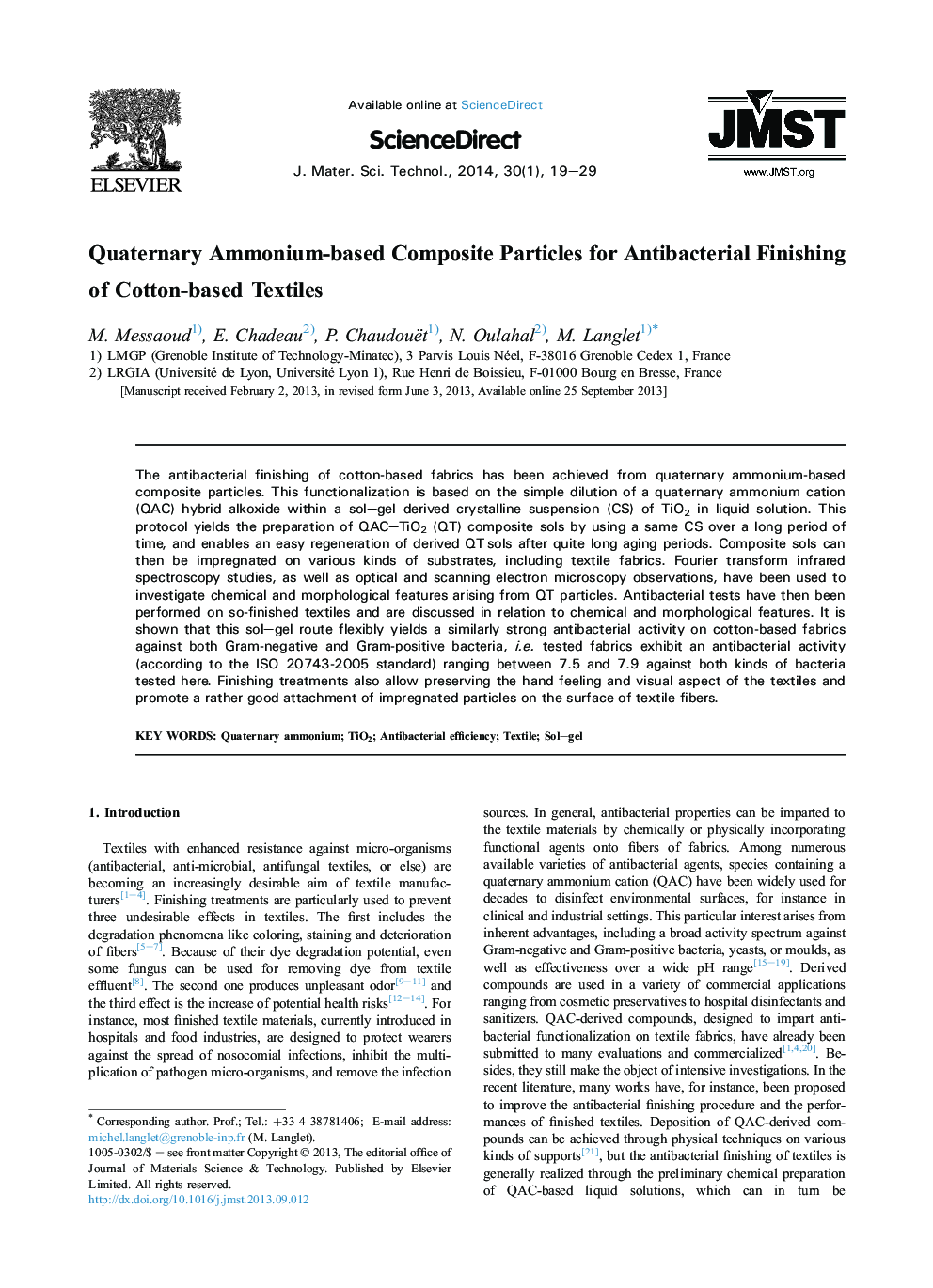| Article ID | Journal | Published Year | Pages | File Type |
|---|---|---|---|---|
| 1556670 | Journal of Materials Science & Technology | 2014 | 11 Pages |
Abstract
The antibacterial finishing of cotton-based fabrics has been achieved from quaternary ammonium-based composite particles. This functionalization is based on the simple dilution of a quaternary ammonium cation (QAC) hybrid alkoxide within a sol-gel derived crystalline suspension (CS) of TiO2 in liquid solution. This protocol yields the preparation of QAC-TiO2 (QT) composite sols by using a same CS over a long period of time, and enables an easy regeneration of derived QT sols after quite long aging periods. Composite sols can then be impregnated on various kinds of substrates, including textile fabrics. Fourier transform infrared spectroscopy studies, as well as optical and scanning electron microscopy observations, have been used to investigate chemical and morphological features arising from QT particles. Antibacterial tests have then been performed on so-finished textiles and are discussed in relation to chemical and morphological features. It is shown that this sol-gel route flexibly yields a similarly strong antibacterial activity on cotton-based fabrics against both Gram-negative and Gram-positive bacteria, i.e. tested fabrics exhibit an antibacterial activity (according to the ISO 20743-2005 standard) ranging between 7.5 and 7.9 against both kinds of bacteria tested here. Finishing treatments also allow preserving the hand feeling and visual aspect of the textiles and promote a rather good attachment of impregnated particles on the surface of textile fibers.
Related Topics
Physical Sciences and Engineering
Materials Science
Materials Chemistry
Authors
M. Messaoud, E. Chadeau, P. Chaudouët, N. Oulahal, M. Langlet,
